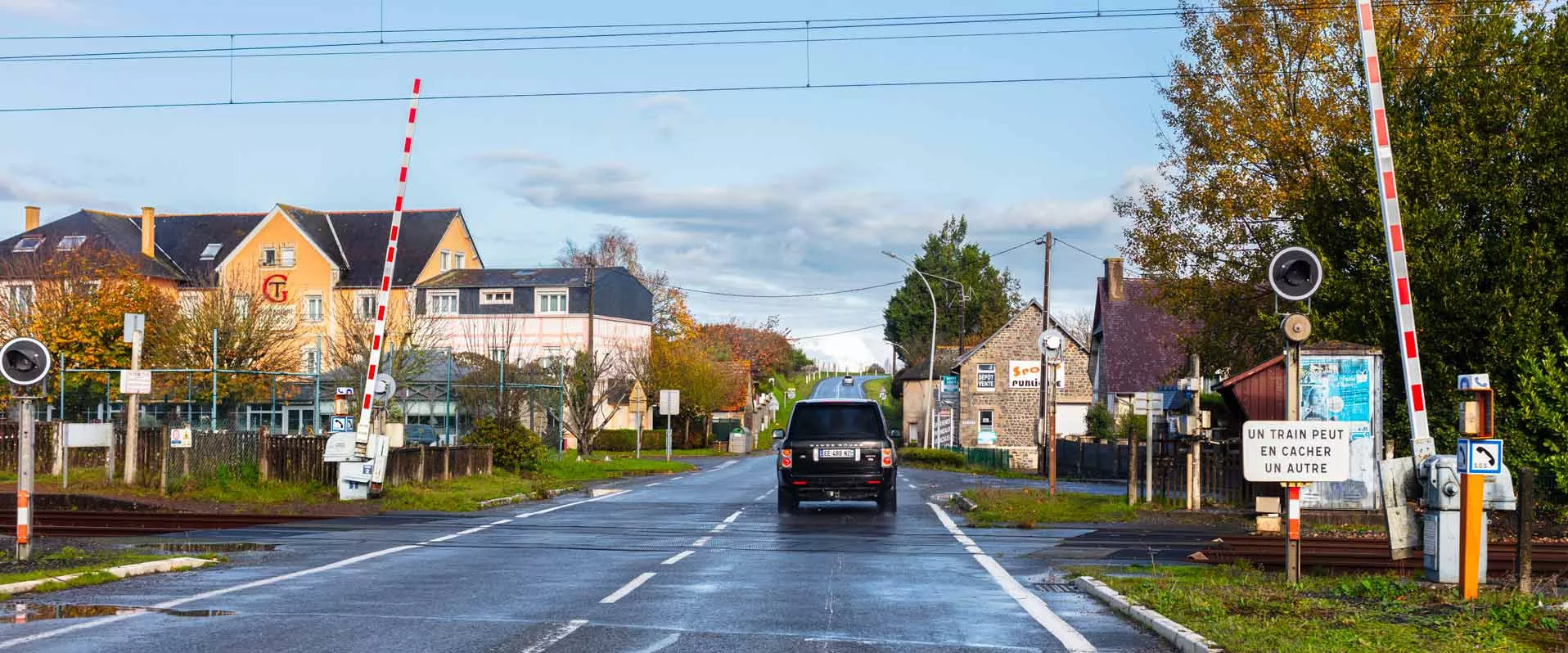
Danger: level crossing!
Did you know that reckless car driving accounts for 98% of accidents at level crossings? Or that half of all these collisions are fatal for the driver? Awareness of the danger is crucial to significantly reduce the number of accidents. Here’s what you need to know to understand how dangerous they are.
Various types of level crossings
A level crossing is where a railway line intersects with a road. In France, there are 15,000 active level crossings across the rail network. There are several different types of crossings:
- automatic ones with flashing lights and audible warnings—these are the most common
- barrier crossings, either half-barrier crossings with 2 barriers that only close the crossing partially, or full-barrier crossings with 4 barriers that close it entirely
- footpath crossings that are only for pedestrians, and
- manually controlled crossings operated by a barrier attendant
Warning signs—usually stop signs and reduce speed signs—and flashing lights at each level crossing regulate train, vehicle and pedestrian traffic.
Remember this chilling figure!
Reckless car driving accounts for 98% of accidents at level crossings. Drivers are often:
- impatient
- distracted because they’re on a familiar route, or
- deliberately infringe the highway code (speeding, weaving through barriers, ignoring the stop sign, etc.)
- fail to notice the road sign warnings or anticipate the level crossing
Note: waiting time at a level crossing is usually less than one minute, which is the same as a red traffic light.
Prevention and safety: what we do to reduce the number of accidents
Every year, SNCF Réseau staff take part in an international accident prevention day. This event targets everyone—drivers and pedestrians—and raises awareness of the importance of following safety instructions near level crossings.
We replace accident-prone level crossings with overpasses or underpasses. Whenever possible, we also arrange for roads to be rerouted.
We also add more safeguards: signs indicating level crossing proximity, traffic islands to improve road safety and prevent drivers weaving through lowered barriers, and lower speed limits near crossings.
How do accidents at level crossings affect rail traffic?
Both train and road traffic are immediately suspended to allow emergency medical and roadside (when a car is involved) services access to the site. Like train accidents involving a person, the police investigator determines when rail traffic can resume normally.
If the train is damaged and cannot continue its journey, our teams arrange for passengers to be transferred to another train or a coach to reach their destination.
Did you know?
Share the article